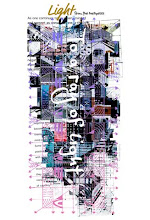With the spread of the Internet, it has become easier for people to obtain a variety of information. For example, it has become easier for consumers to obtain information on the lowest prices of products, and instead of relying on one-sided information from companies, they use blogs, video sites, and social networking services (SNS) to learn product information and criticism, and judge the value of products.
The information knowledge on the Internet that these consumers deal with is used by computers and cell phones. It is commonplace for cell phones to be able to use functions such as music, video, photos, games, the Internet, maps, location information, weather forecasts, and address books, and they are becoming more multifunctional and smaller at the same time. In addition, cell phones with built-in projectors have been developed, making it possible to project images from the screen. The evolution of projection technology has progressed to the point where technology has been developed to project 3D images onto empty space. As space projection technology evolves, it will become possible to project 2D and 3D images in the air instead of on the screen of a cell phone. This will make it possible to make the device itself as small as possible and make only the image appear.
Along with the evolution of projection technology, compression technology has also been developed to reduce the size of the projected image while maintaining high quality, and this technology is being used in cell phones and the Internet.
As a result of the combination of these various technologies, mobile devices are becoming more multifunctional and formless. In addition, video compression technology has made it possible to reduce the size of images, and this, combined with technology for projecting images onto space, is moving us in the direction of magically projecting images anywhere.
Combining these various cutting-edge technologies, we can see that the evolution of science and technology is heading in a single direction. It is already possible to connect the brain to a computer, for example, to move the arm of a robot just by thinking about it, or to send commands from the computer to the brain. This is a technology that reads the electrical signals coming from the human brain. Motor commands from the brain are transmitted from the spinal cord to the nerves in various parts of the body to the muscles, and the body moves. The body moves by reading these command signals and connecting them to the robot's arm. It is even possible to feel the sensation of objects touched by the robot's arm. It is also possible for a blind person to wear a pair of glasses with a video camera, convert the images from the glasses into electrical signals, and recognize them as images in the brain.
The fact that a person who is unable to move his or her body due to an injury can operate a robot hand just by thinking about it means that a computer connected to the Internet can be operated just by thinking about it, no matter where it is in the world. This means that a computer connected to the Internet can be operated by just a thought anywhere in the world. When this is combined with the projection technology that projects images in the air, it will be possible to explain something to someone while projecting the image in front of them. In creative activities, it will be possible to immediately show what you have imagined. The melody of music can be expressed with the sound you imagine in your mind, and paintings can be realized as you imagine them. These brain-connected technologies are linked to artificial intelligence, which is predicted to be far beyond the human level by 2045.
Nanotechnology is advancing to create things at the atomic and molecular scale of a billionth of a meter, and as these precision technologies evolve with artificial intelligence, we will be able to give our homes and cars the ability to maintain and repair themselves that life in nature has. If the body of a car is dented, the body will automatically repair itself to its original shape. One of the applications of this kind of technology is a home synthesizer. According to J. Storrs Hall, author of Nanofuture, this could take the form of a microwave oven. You just tell the computer what you want, and wait for the synthesizer to produce it. This is like an incredibly powerful 3D printer.
The clothes made with this technology are so thin you can't even tell you're wearing them. To put it in simple terms, let's say that a huge eight-story warehouse-type store is filled with wires and tubes with a diameter of five millimeters, pipes with a diameter of several centimeters, and belts with a width of one centimeter in the hood of a car, and this building covers the entire Asian continent. This is a garment that has expanded five million times.
These technological advances create what is called utility fog. This fills the air like a fog, and if you are surrounded by it, you can even fly. To be precise, you are supported by the fog, but living in a utility fog means that when you reach out your hand, guns, swords, clothes, tools, cars, etc. appear out of nowhere, just like the characters in comic books. This same thing becomes possible in reality. These objects can be heavy, hard or soft. You can become invisible, you can create another you, you can transform yourself into someone else, you can become a bird and fly.
In the future, a small household synthesizer at home will create a utility fog, and everything around us, from our homes to our furniture and clothes, will appear in form just by imagining it.






0 コメント